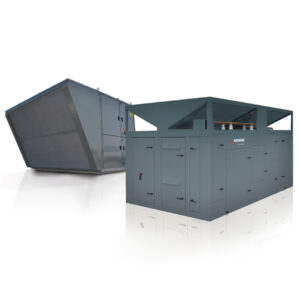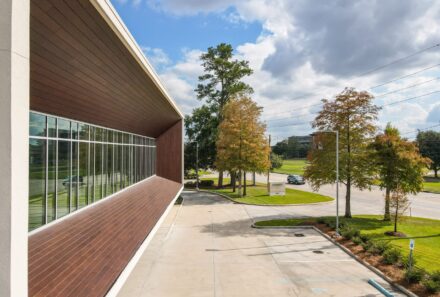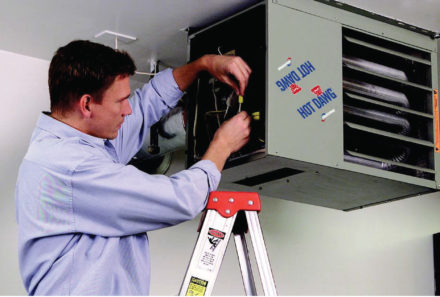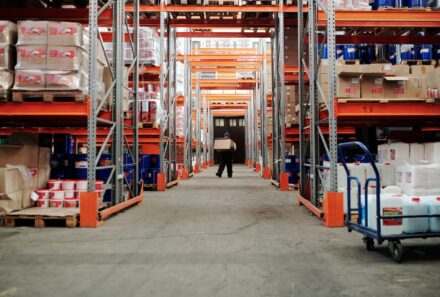
Safely Using DOAS Systems During the Pandemic
COVID-19 has brought indoor air quality concerns to the forefront. Facilities managers need to be mindful of safety when it comes to every aspect of their commercial HVAC systems.
The benefits of using Dedicated Outdoor Air Systems (DOAS) to improve the air quality inside hotels, schools, offices, manufacturing plants and other facilities while ensuring the health and wellbeing of occupants and employees are well known. But in the past months, questions have arisen about best practices for operating DOAS units that use energy recovery systems during the pandemic.
Incorporating energy recovery systems into a DOAS lowers operating costs and may allow for reduced HVAC equipment sizing, reducing expenses even further. With an energy recovery system, recovered energy from exhaust air is used to preheat or precool incoming fresh air.
The energy recovery wheels available with Modine’s Atherion® Dedicated Outdoor Air System are composed of aluminum energy transfer material that can withstand harsh environmental conditions with a 3Å molecular sieve desiccant that maximizes moisture exchange in the vapor phase while selectively minimizing exchange of larger volatile organic compounds.

To assist facilities managers in deal with optimizing air quality while using energy recovery systems, Airxchange and Modine offer some best practices to follow:
Best Practices During the Pandemic
Minimize exhaust air transfer: According to ASHRI 1060 certification, the proper term is Exhaust Air Transfer Ratio (EATR) and is the fraction of exhaust air that gets transferred to the supply air. An HVAC technician should be able to compare air pressure at the return air inlet and the supply air discharge of the energy recovery wheel. The recommendation is to maintain a higher pressure in the supply air section than the exhaust air section. This should reduce the amount of EATR to three percent (3%) or less.
Do not bypass or disable the energy recovery system: This could result in negative outcomes such as reduced outdoor ventilation and/or increases in indoor humidity that can promote biological growth. The benefit of greater ventilation rates is far greater than the extremely low risk that comes from any transfer of exhaust to supply air, especially when EATR is kept to 3% or less. Furthermore, the use of exhaust air filters before the wheel and high efficiency filters in the supply air after the wheel further decrease risk and allow for maximum ventilation rates. Filters in the supply airstream are recommended to be at least MERV13.
Consider increasing ventilation over building code minimum: If the equipment has adequate capacity, it is possible to increase ventilation flow through the DOAS and energy recovery system while maintaining the benefits of energy recovery and humidity control while reducing the chance of airborne infections. Increasing ventilation rates decreases exposure by diluting air containing infectious particles with infectious-particle free air.
Clean the energy-recovery wheel: Energy recovery wheels tend to be self-cleaning in that the rotation through opposing airstreams blows off most dust/debris not caught by filters. Filter maintenance is an important part of keeping the wheel clean, however the wheels should still be periodically inspected and cleaned using a brush and vacuum to gently remove any buildup as needed.
Even during these challenging times, a DOAS unit is a cost-effective way to improve air quality. Inherently safe energy-recovery systems make them even more attractive for contractors and building owners.








